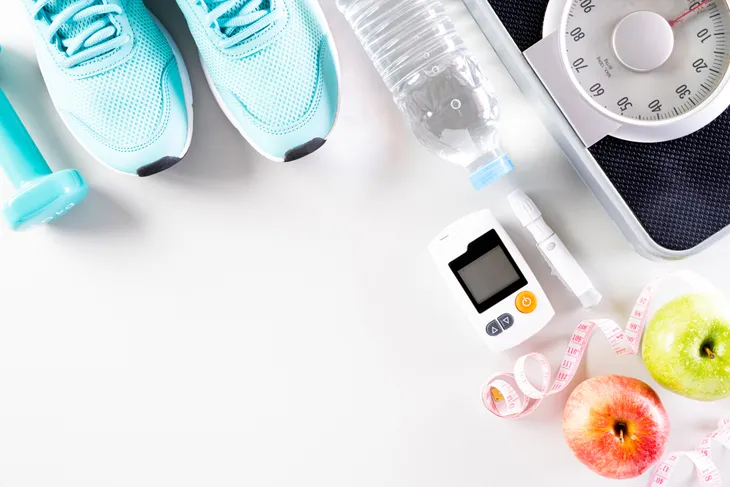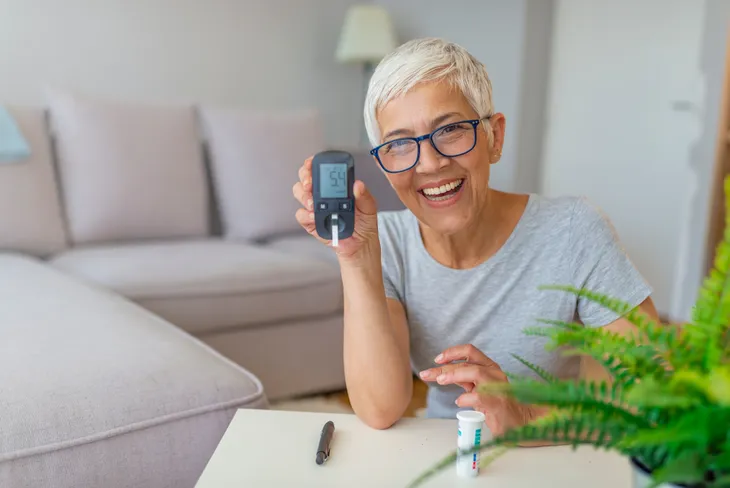Many traditional New Year’s resolutions revolve around improving health, love, or money. All of these are wonderful aspirations to have, but for people with a chronic illness like diabetes, many of these goals have hidden layers that can impact the likelihood of our success. Type 1 diabetes is a very nuanced illness to live with and manage. When it comes to making resolutions for the New Year, there are a plethora of goals (that stray from the traditional) to aim for that will increase our quality of life.
The great thing about setting new, chronic illness-related intentions for the upcoming year is that they don’t have to be a main focus. There are plenty of small goals and habits to focus on that will improve your everyday life. Whether it’s related to mental health, physical health, or just getting out of your comfort zone, there are plenty of options to choose from when it comes to setting realistic New Year’s resolutions.
Here are some important tips to remember when setting resolutions with an illness like type 1 diabetes…
Want diabetes content delivered straight to your inbox? Sign up for our Diabetes newsletter and receive exclusive news and articles written from our team of diabetes experts.
Make Them Realistic
When it comes to setting resolutions, the most important way to ensure success is to make sure they are honest and realistic. Take a moment to think about your current relationship with diabetes. Write down some weakness when it comes to living with diabetes and narrow it down to one or two things you’d like improve. Don’t take on too much!
Be specific on how you plan to tackle these weaknesses and set up a plan for execution. Take the time to create a well thought out plan that includes any obstacles that might pop up along the way. Consider how these obstacles can be handled and any problem solving that might be necessary. If you’re stuck on how you’d like to improve your relationship with diabetes this upcoming year, below are some ideas and goals in different categories of overall health to help get the ball rolling.
Mental Health Goals
Type 1 diabetes has a huge impact of one’s mental well-being. Since chronic illnesses never go away, it can feel like we’re constantly in a state of survival. This is exhausting and takes a toll on a person’s overall well-being. It’s important to have self compassion on the days when diabetes feels like a battlefield. Take note of how diabetes is affecting your mental health. Write down specific feelings so that you can start to find ways to live harmoniously with the disease.
Another way diabetes can affect one’s mental health is through weaning one’s self-confidence and body image. Are there small steps you can take to improve this? Possibly getting more comfortable with talking about the disease (write yourself a script or keywords if you aren’t used to talking about it). Educate yourself and others so that the stigma around diabetes can be lessened.
Try wearing your diabetes technology or do injections in public. See how that feels. Practice affirmation around type 1 diabetes. Remind yourself of how valuable you are and how you did not cause your type 1 diabetes. Reach out to the online diabetes community to find like-minded people living with type 1 diabetes. Consider attending a local meet up. Start seeing a chronic illness therapist if it is accessible to you.
Physical Health Goals
Improving your physical health while living with diabetes can seem pretty straight forward. Many people with diabetes have the goal of lowering their A1C’s (test result reflects your average blood sugar level for the past two to three months) when the new year comes around. I think this is a great goal, but it’s important to get specific about how one plans to do so which is why tracking outcomes is so important.
Many doctors know how to give advice on improving physical health with diabetes but sometimes, nuance for one’s personal life gets lost. This includes, adding physical activity and being more conscious of food choices.
Sometimes, exercise can cause blood glucose numbers to go really low, so focus on finding a form of exercise that feels safe and controllable. For me personally, I like to do physical activity a couple hours after I’ve eaten or first thing in the morning when I am confident I won’t go low on the hormone that regulates glucose in the blood. Diabetes is all about detail. Paying close attention to how our choices affect how we live with the disease will have great pay off. Choose one new activity and stick to it, be honest with how often you think you can do it, and don’t forget to have FUN!
You should also be aware of how certain foods can affect glucose levels and mood. This can also help with better management and likely lower A1C. It could be as simple as writing down when you last experienced a big glucose spike so that you can make more informed choices in the future. It might be as simple as swapping out one specific item at breakfast or lunch. (Here are some Diet Tips for Type 1 Diabetes).
Trying New Things
Trying something new when living with type 1 diabetes can be an exciting and sometimes scary experience. Maybe diabetes has made you fearful to travel or meet new people. If your goal is to try something new, start with small steps like maybe going to a neighbouring city for a couple days or taking a monthly class in something that has interested you. Practice integrating your type 1 diabetes with the new experience. To feel more prepared, make sure you pack enough supplies or let the teacher know in advance about how diabetes could affect your involvement in the class.
Whatever you do, the choice you’re making to live a fuller, more varied life is a win and will have a positive impact on life. Remember to be specific about your goals, tailor them to your needs and your comfort zone.
However you decide to improve your relationship with type 1 diabetes this year, remember that even the effort is something to be proud of. Diabetes doesn’t come with a tiny cheerleader to congratulate us on our accomplishments each day so remember to cheer yourself on this year.







